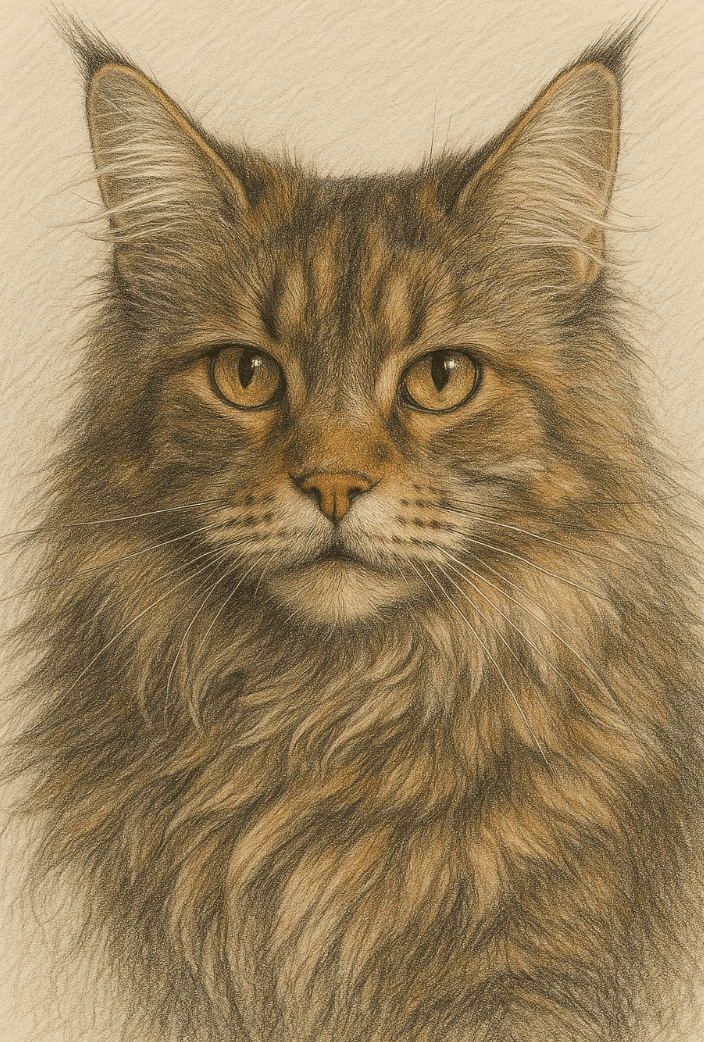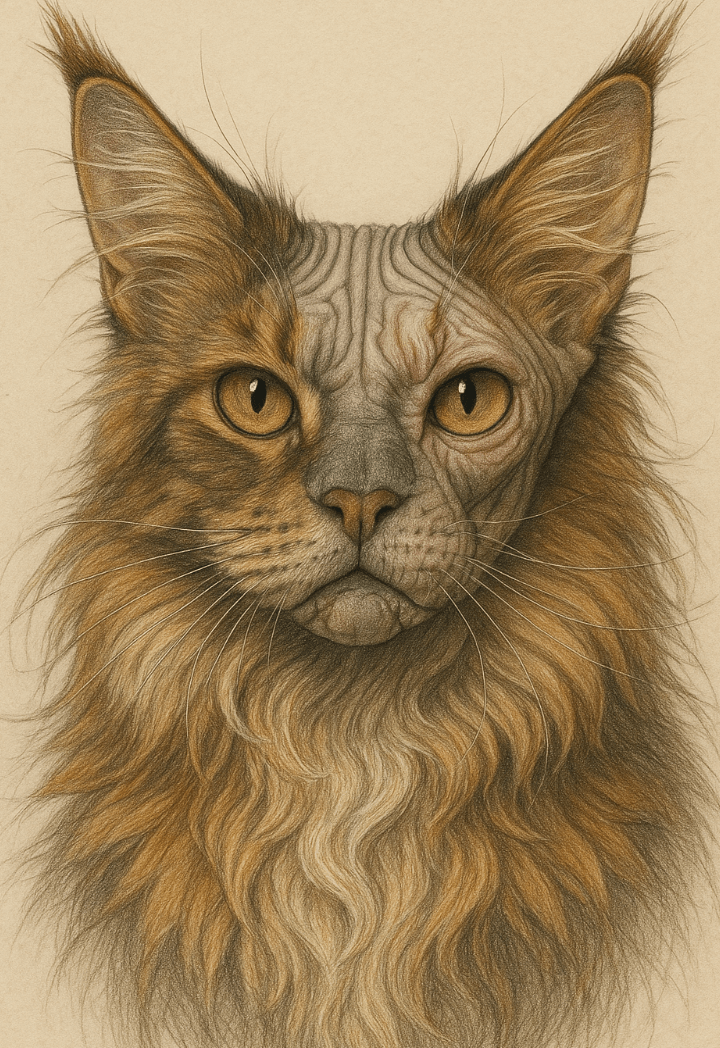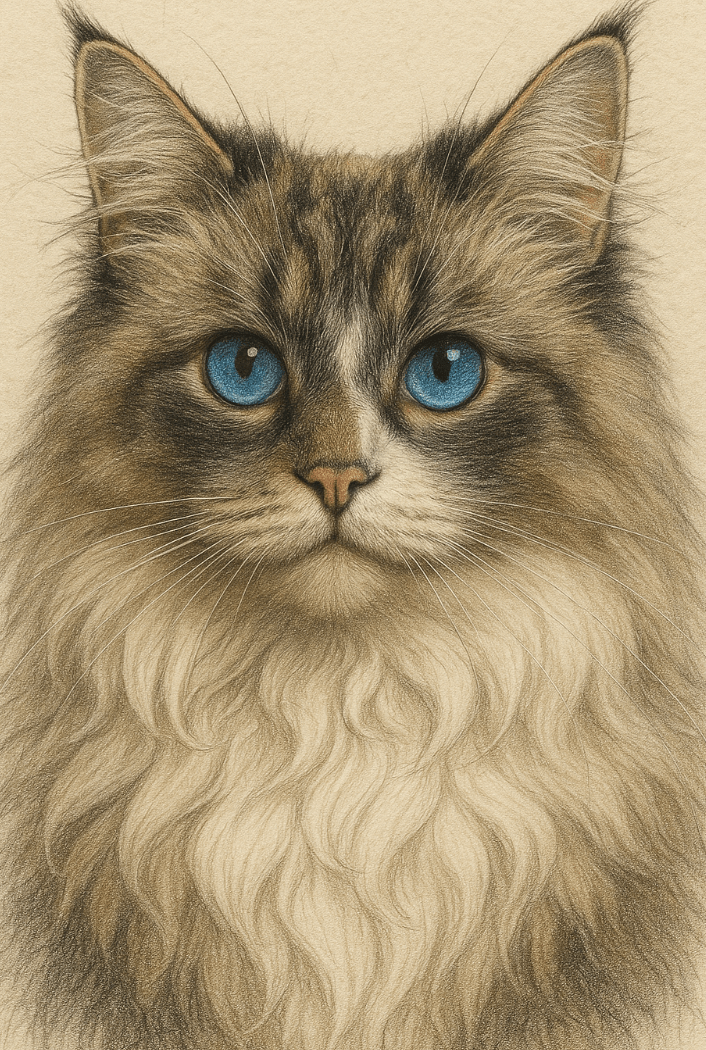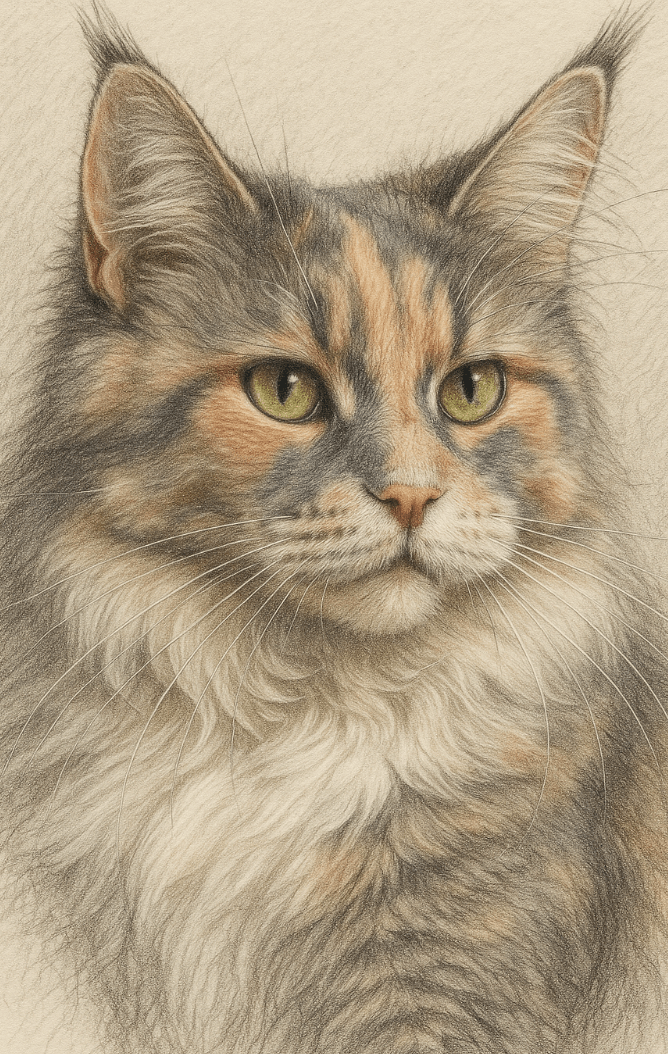Do Maine Coon Cats Shed?
Maine Coon cats are beloved for their majestic appearance, gentle personalities, and impressive size. However, one question that often arises among potential owners is whether these fluffy giants shed—and if so, how much? Like all cats, Maine Coons do shed, but the extent of shedding depends on various factors such as genetics, grooming habits, and seasonal changes. Understanding why and when your Maine Coon sheds can help you manage it effectively while keeping your home fur-free and your cat healthy. In this blog post, we’ll explore everything you need to know about shedding in Maine Coon cats, from tips for minimizing hair around the house to maintaining their luxurious coats.
Why Do Maine Coon Cats Shed?
Shedding is a natural process for all cats, including Maine Coons, and serves several important purposes. Here’s why your Maine Coon might leave tufts of fur around your home.
Seasonal Shedding:
Maine Coons typically shed more during spring and fall as they adjust their coats to changing temperatures.Double Coat Adaptation:
Their thick double coat, designed to protect against harsh weather, sheds naturally to regulate body temperature.Health and Nutrition:
A well-balanced diet rich in essential fatty acids supports healthy skin and reduces excessive shedding.Stress or Illness:
Changes in shedding patterns can indicate stress, allergies, or underlying health issues like hormonal imbalances.Genetics:
Some Maine Coons may naturally shed more than others due to individual genetic traits.
Understanding these factors helps you identify normal shedding versus potential problems, ensuring your cat stays comfortable year-round.
How Much Do Maine Coon Cats Shed?
While all cats shed to some degree, Maine Coons are considered moderate to heavy shedders due to their long, dense fur. Here’s what to expect when living with one of these magnificent felines.
Daily Shedding:
You’ll likely notice loose hairs daily, especially if your Maine Coon spends time indoors where temperature fluctuations are minimal.Seasonal Surges:
During shedding seasons, you may find larger clumps of fur, particularly in areas where your cat lounges frequently.Furniture Impact:
Their thick fur tends to cling to furniture, clothing, and carpets, requiring regular cleaning to keep surfaces fur-free.Individual Variation:
Not all Maine Coons shed equally—some may have lighter shedding patterns depending on their coat type and environment.Indoor vs. Outdoor Cats:
Indoor Maine Coons may shed more consistently throughout the year, while outdoor cats often experience more pronounced seasonal shedding.
By recognizing these shedding patterns, you can better prepare for life with a Maine Coon and implement strategies to manage loose fur effectively.
Check this guide 👉Maine Coon Sphynx Cat: Best 7 Expert Tips!
Check this guide 👉Maine Coon Ragdoll Cat Mix: Best 7 Expert Tips!
Check this guide 👉Maine Coon Turkish Angora Mix: Best 7 Expert Tips!
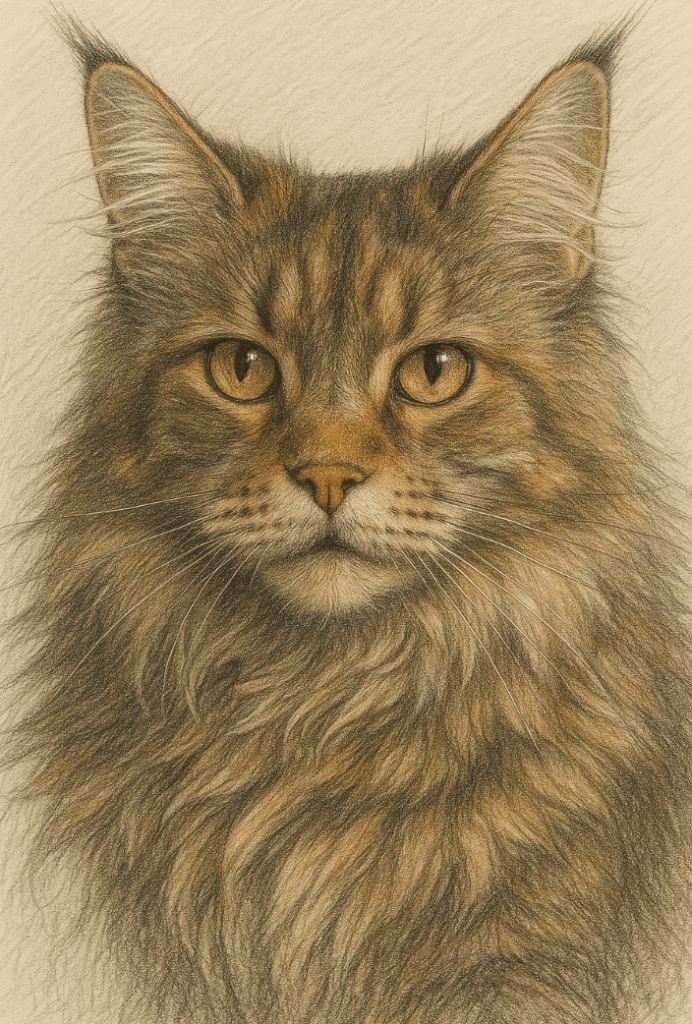
Tips to Minimize Shedding | Common Causes of Excessive Shedding |
|---|---|
Brush your Maine Coon regularly | Poor diet lacking essential nutrients |
Use a high-quality de-shedding tool | Stress or anxiety |
Maintain a consistent grooming routine | Underlying health conditions |
Provide omega-3 supplements for coat health | Seasonal coat adjustments |
Vacuum frequently to manage loose fur | Lack of proper hydration |
Grooming Tips to Manage Shedding in Maine Coon Cats
Regular grooming is key to managing shedding in Maine Coon cats and keeping their coats soft, shiny, and mat-free. Follow these tips to minimize shedding and maintain their beautiful fur.
Invest in Quality Brushes:
Use a slicker brush or comb designed for long-haired breeds to remove loose undercoat hairs without damaging the topcoat.De-Shedding Tools:
Specialized de-shedding tools like the Furminator can significantly reduce shedding by targeting loose undercoat hairs.Establish a Routine:
Aim to brush your Maine Coon at least 2-3 times per week—or daily during peak shedding seasons—to prevent mats and tangles.Bathing Occasionally:
Bathe your Maine Coon every few months using a moisturizing shampoo to keep their coat clean and healthy.Check for Mats:
Inspect areas prone to tangling, such as behind the ears and under the legs, and gently detangle any knots.
With consistent grooming, you can keep shedding under control while strengthening your bond with your Maine Coon.
Signs Your Maine Coon May Be Shedding Too Much
While shedding is normal, excessive shedding could signal an underlying issue that requires attention. Watch for these warning signs.
Clumps of Hair Loss:
Large bald patches or uneven hair loss may indicate skin infections or parasites like fleas.Excessive Scratching:
Frequent scratching or biting at the skin suggests irritation, possibly caused by allergies or dryness.Dull or Brittle Coat:
A lackluster coat may point to nutritional deficiencies or poor overall health.Red or Irritated Skin:
Visible redness, scabs, or flaky skin warrants a visit to the veterinarian for diagnosis and treatment.Unusual Behavior Changes:
If your normally active Maine Coon becomes lethargic or withdrawn, it could be linked to discomfort caused by excessive shedding.
Recognizing these signs early allows you to address potential problems before they escalate.
Seasonal Tips for Managing Shedding
Managing shedding in Maine Coons varies depending on the season. Here are some tailored tips to help you stay ahead of the fur storm throughout the year.
Spring Shedding:
Focus on removing the thick winter undercoat with frequent brushing sessions and deep conditioning treatments.Summer Maintenance:
Keep your cat cool and hydrated; lightweight grooming helps prevent overheating and minimizes loose fur buildup.Fall Preparation:
Transition into heavier brushing routines to support the growth of their insulating winter coat.Winter Care:
Limit baths during colder months to retain natural oils, which help protect their skin and coat.Year-Round Attention:
Consistent grooming and monitoring ensure shedding remains manageable regardless of the season.
Adapting your approach to each season keeps shedding under control and your Maine Coon comfortable.
Benefits of Regular Grooming Beyond Shedding Control
Grooming isn’t just about managing shedding—it offers numerous additional benefits for both you and your Maine Coon.
Bonding Time:
Grooming sessions strengthen the emotional connection between you and your cat through positive interactions.Early Detection of Health Issues:
Regular brushing allows you to spot skin abnormalities, lumps, or pests early, ensuring prompt veterinary care.Improved Coat Health:
Removing dead hair and distributing natural oils promotes a shiny, healthy coat that feels soft to the touch.Reduced Hairballs:
Less loose fur means fewer opportunities for your cat to ingest hair while grooming, reducing hairball formation.Cleaner Home Environment:
Minimizing loose fur makes cleaning easier and reduces allergens in your home.
The advantages of grooming extend far beyond simply controlling shedding, making it an essential part of Maine Coon care.
Dietary Adjustments to Reduce Shedding
A well-balanced diet plays a crucial role in minimizing shedding and promoting overall feline health. Here’s how to optimize your Maine Coon’s nutrition.
High-Quality Protein Sources:
Look for cat foods containing real meat as the primary ingredient to support muscle and coat health.Omega-3 Fatty Acids:
Incorporate fish oil or flaxseed supplements to nourish the skin and reduce inflammation, leading to less shedding.Hydration Support:
Ensure access to fresh water and consider wet food options to keep your cat hydrated and prevent dry skin.Avoid Fillers and Additives:
Low-quality ingredients like corn, soy, and artificial flavors can irritate the digestive system and exacerbate shedding.Consult Your Veterinarian:
Discuss dietary changes with your vet to ensure they align with your Maine Coon’s specific needs and lifestyle.
Feeding a nutrient-rich diet not only reduces shedding but also enhances your cat’s overall vitality and happiness.
Frequently Asked Questions About Maine Coon Shedding
Do Maine Coons shed more than other cats?
Yes, their thick double coat means they shed moderately to heavily compared to short-haired breeds.
How often should I groom my Maine Coon?
Aim to brush them 2-3 times per week, increasing frequency during shedding seasons.
Can diet affect shedding?
Absolutely! A balanced diet rich in omega-3 fatty acids promotes a healthy coat and reduces shedding.
Is shedding worse in winter or summer?
Shedding peaks in spring (to lose the winter coat) and fall (to grow the winter coat).
What tools work best for grooming Maine Coons?
Slicker brushes, wide-toothed combs, and de-shedding tools like the Furminator are highly effective.
Living Happily with a Shedding Maine Coon Cat
While shedding is an inevitable part of life with a Maine Coon, it doesn’t have to be overwhelming. By understanding their natural shedding patterns, investing in proper grooming tools, and addressing any underlying health issues, you can enjoy the beauty of their luxurious coat without letting loose fur take over your home. With patience and care, you’ll find that managing shedding becomes just another aspect of loving your gentle giant. Whether you’re a seasoned Maine Coon owner or considering adopting one, embracing their shedding quirks will only deepen your appreciation for these incredible felines.
Do Maine Coon Cats Shed? Best 7 Expert Tips! Discover expert advice on managing shedding, grooming routines, and keeping your Maine Coon's coat healthy and your home fur-free.
Maine Coon Sphynx Cat: Best 7 Expert Tips! Discover expert advice on care, grooming, and living with this unique hybrid for a happy and healthy feline companion.
Maine Coon Ragdoll Cat Mix: Best 7 Expert Tips! Discover expert advice on care, grooming, and living with this affectionate hybrid for a happy and healthy feline companion.
Diluted Calico Maine Coon: Best 7 Expert Tips! Discover expert advice on care, temperament, and living with this unique feline for a happy and healthy companion.

